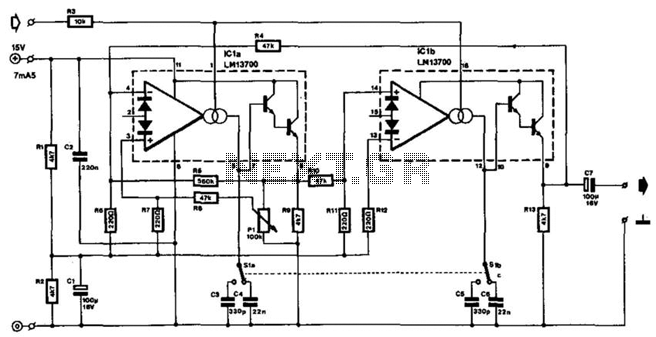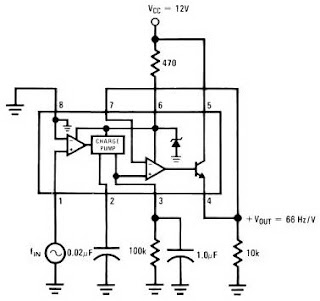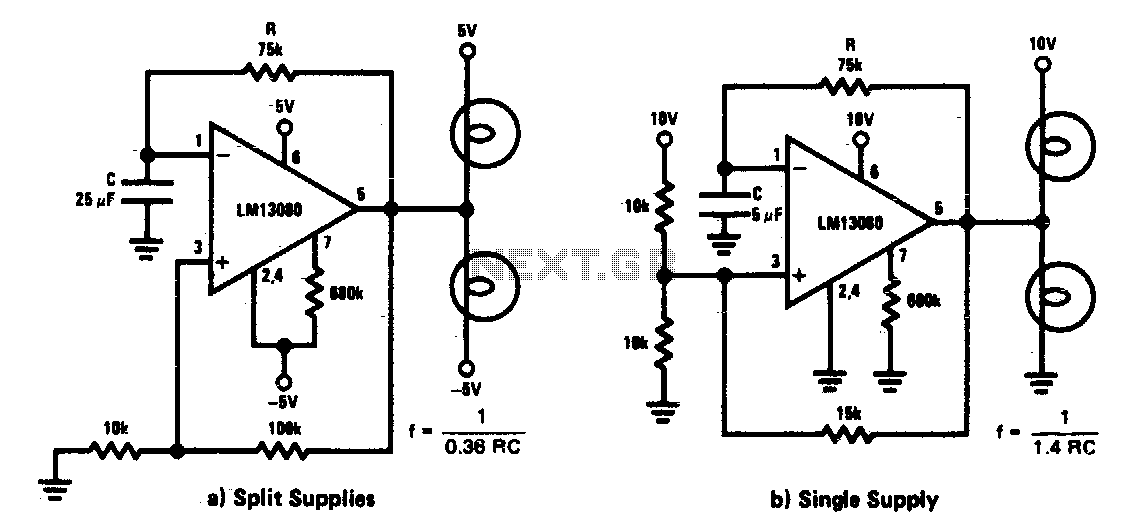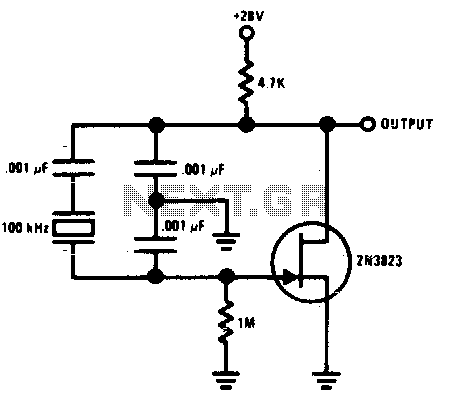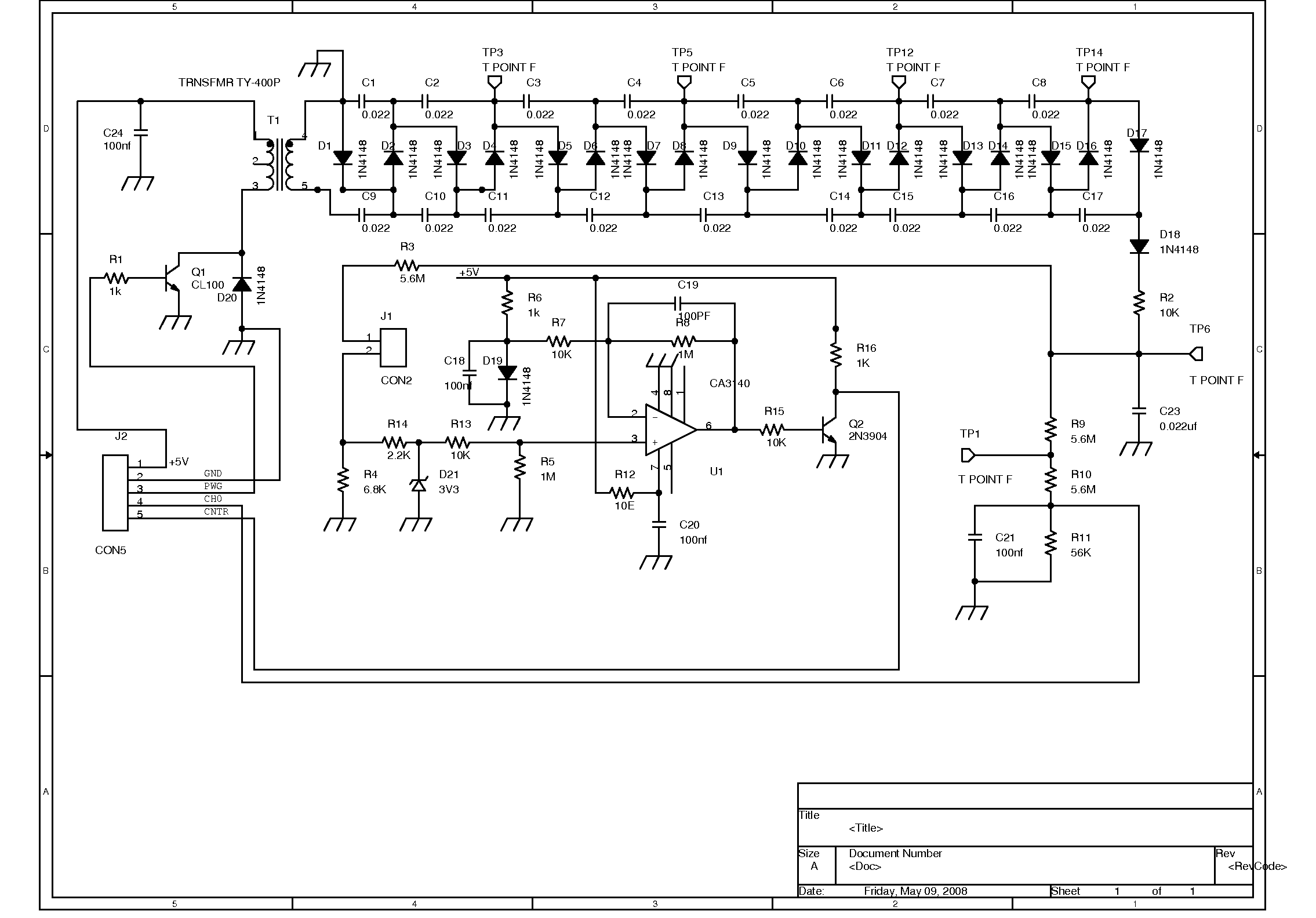
Frequency Counter Tachometer
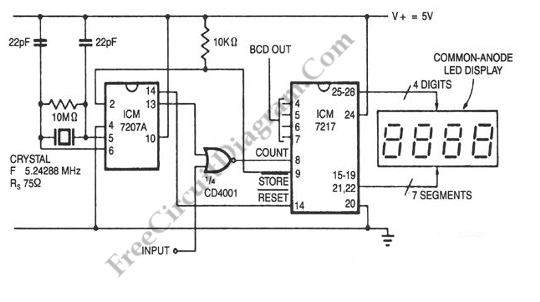
For convenient reading, the display of this tachometer circuit shows the reading in hertz directly. The conversion time will be equal to the gating time.
The tachometer circuit is designed to provide a direct digital readout of rotational speed in hertz, facilitating easy interpretation of the measurements. The circuit utilizes a frequency-to-voltage converter, which translates the input frequency derived from the rotating object into a proportional voltage. This voltage is then processed by an analog-to-digital converter (ADC) to display the frequency in hertz on a digital screen.
The gating time, which is the duration over which the input signal is measured, is critical in determining the accuracy of the readings. By synchronizing the conversion time with the gating time, the circuit ensures that the frequency measurement reflects the true operational speed of the motor or shaft being monitored.
To implement this circuit, essential components include a microcontroller to handle the ADC and display interface, a frequency sensor (such as a Hall effect sensor or an optical encoder) to detect the rotational speed, and a display module (such as a seven-segment display or an LCD) to present the output. The microcontroller is programmed to initiate the ADC at the end of each gating interval, ensuring that the displayed value corresponds to the frequency measured during that time frame.
The tachometer circuit can be powered by a standard DC power supply, and it is advisable to incorporate filtering capacitors to stabilize the power supply voltage. Additionally, proper signal conditioning may be required to filter out noise from the frequency sensor, ensuring that the readings are accurate and reliable.
Overall, this tachometer circuit design provides a straightforward yet effective solution for measuring rotational speed in real-time, making it suitable for various applications in industrial and automotive settings.For convenient reading, the display of this tachometer circuit show inthe reading in hertz directly.? The conversion time will be equal to the gating time,. 🔗 External reference
The tachometer circuit is designed to provide a direct digital readout of rotational speed in hertz, facilitating easy interpretation of the measurements. The circuit utilizes a frequency-to-voltage converter, which translates the input frequency derived from the rotating object into a proportional voltage. This voltage is then processed by an analog-to-digital converter (ADC) to display the frequency in hertz on a digital screen.
The gating time, which is the duration over which the input signal is measured, is critical in determining the accuracy of the readings. By synchronizing the conversion time with the gating time, the circuit ensures that the frequency measurement reflects the true operational speed of the motor or shaft being monitored.
To implement this circuit, essential components include a microcontroller to handle the ADC and display interface, a frequency sensor (such as a Hall effect sensor or an optical encoder) to detect the rotational speed, and a display module (such as a seven-segment display or an LCD) to present the output. The microcontroller is programmed to initiate the ADC at the end of each gating interval, ensuring that the displayed value corresponds to the frequency measured during that time frame.
The tachometer circuit can be powered by a standard DC power supply, and it is advisable to incorporate filtering capacitors to stabilize the power supply voltage. Additionally, proper signal conditioning may be required to filter out noise from the frequency sensor, ensuring that the readings are accurate and reliable.
Overall, this tachometer circuit design provides a straightforward yet effective solution for measuring rotational speed in real-time, making it suitable for various applications in industrial and automotive settings.For convenient reading, the display of this tachometer circuit show inthe reading in hertz directly.? The conversion time will be equal to the gating time,. 🔗 External reference
